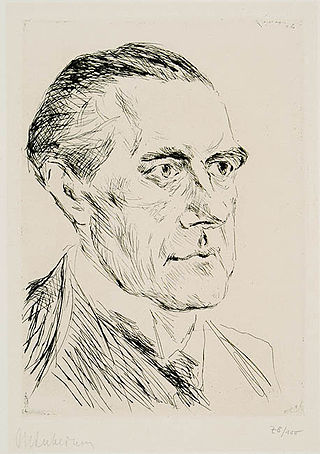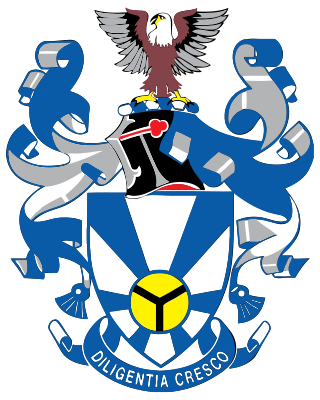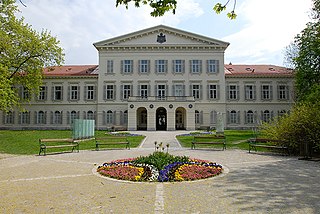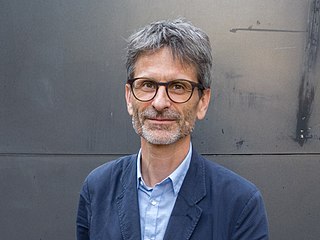
Linz is the capital of Upper Austria and third-largest city in Austria. Sitting on the river Danube, the city is located in the far north of Austria, 30 km (19 mi) south of the border with the Czech Republic. As of 1. January 2024, the city has a population of 212.538 and is the 7th largest of all cities on the Danube river.

A rector is a senior official in an educational institution, and can refer to an official in either a university or a secondary school. Outside the English-speaking world, the rector is often the most senior official in a university, while in the United States, the equivalent is often referred to as the president, and in the United Kingdom and Commonwealth of Nations, the equivalent is the vice-chancellor. The term and office of a rector can be referred to as a rectorate. The title is used widely in universities in Europe and is very common in Latin American countries. It is also used in Brunei, Macau, Turkey, Russia, Pakistan, the Philippines, Indonesia, Israel and the Middle East. In the ancient universities of Scotland the office is sometimes referred to as Lord Rector, is the third most senior official, and is usually responsible for chairing the University Court.

Peter Behrens was a leading German architect, graphic and industrial designer, best known for his early pioneering AEG Turbine Hall in Berlin in 1909. He had a long career, designing objects, typefaces, and important buildings in a range of styles from the 1900s to the 1930s. He was a foundation member of the German Werkbund in 1907, when he also began designing for AEG, pioneered corporate design, graphic design, producing typefaces, objects, and buildings for the company. In the next few years, he became a successful architect, a leader of the rationalist / classical German Reform Movement of the 1910s. After WW1 he turned to Brick Expressionism, designing the remarkable Hoechst Administration Building outside Frankfurt, and from the mid-1920s increasingly to New Objectivity. He was also an educator, heading the architecture school at Academy of Fine Arts Vienna from 1922 to 1936. As a well known architect he produced design across Germany, in other European countries, Russia and England. Several of the leading names of European modernism worked for him when they were starting out in the 1910s, including Ludwig Mies van der Rohe, Le Corbusier and Walter Gropius.

The Johannes Kepler University Linz is a public university in Austria. It is located in Linz, the capital of Upper Austria. It offers bachelor's, master's, diploma and doctoral degrees in business, engineering, law, science, social sciences and medicine.
Academic administration is a branch of university or college employees responsible for the maintenance and supervision of the institution and separate from the faculty or academics, although some personnel may have joint responsibilities. Some type of separate administrative structure exists at almost all academic institutions. Fewer institutions are governed by employees who are also involved in academic or scholarly work. Many senior administrators are academics who have advanced degrees and no longer teach or conduct research.

The Anton Bruckner Private University is one of five Austrian Universities for Music, Drama and Dance, and one of four universities in Linz, the European Capital of Culture 2009. 850 students from all parts of the world study here. They are taught by 200 professors and teaching staff, who are internationally recognised artists, academics and teachers. More than 30% of the students and instructors come from abroad. The university was granted accredited private university status in 2004, as part of the Austrian Private Universities Conference,.

The University for Continuing Education Krems is an Austrian university specializing in further education for working professionals. It is located in Krems an der Donau, Lower Austria.

The Bauhaus-Universität Weimar is a university located in Weimar, Germany, and specializes in the artistic and technical fields. Established in 1860 as the Great Ducal Saxon Art School, it gained collegiate status on 3 June 1910. In 1919 the school was renamed Bauhaus by its new director Walter Gropius and it received its present name in 1996. There are more than 4000 students enrolled, with the percentage of international students above the national average at around 27%. In 2010 the Bauhaus-Universität Weimar commemorated its 150th anniversary as an art school and college in Weimar.

The University of Zululand or UniZulu is a comprehensive tertiary educational institution north of the uThukela River in KwaZulu-Natal, South Africa. The university has established partnerships with schools in the United States and Europe such as the University of Mississippi, Radford University, Florida Agricultural and Mechanical University and Chicago State University. UniZulu was founded with the help of the Prince of Phindangene, Mangosuthu Buthelezi, who was also chancellor of the institution when it was established.
A chancellor is a leader of a college or university, usually either the executive or ceremonial head of the university or of a university campus within a university system.
The ancient university governance structure in Scotland is the organisational system imposed by a series of Acts of Parliament called the Universities (Scotland) Acts 1858 to 1966. The Acts applied to what were termed the 'older universities': the University of St Andrews, the University of Glasgow, the University of Aberdeen and the University of Edinburgh. Together these four universities are commonly referred to as the ancient universities of Scotland. Whilst the Acts do not directly apply to the University of Dundee, the same governance structure was ordained for use by that institution in its royal charter.

The Goce Delčev University of Štip is a public university in North Macedonia. Founded in 2007, the university has twelve faculties and three academies. As of 2018–19 school year, a total of 8,237 students are enrolled at the university.

The Stadtwerkstatt is an open event and project house in Linz. Founded in 1979 by young activists, it is the city's oldest autonomous cultural center. In addition to several music events each week, other cultural and artistic events are also held regularly. Three different associations operate in the Stadtwerkstatt building: the Friedhofstr 6 association with its Cafe Strom, art projects and events departments, as well as the non-commercial radio station Radio FRO and the net art and culture initiative servus.at.

The Vienna University of Economics and Business is a public research university in Vienna, Austria. The university received triple accreditation.

The University of Music and Performing Arts Graz, also known as Kunstuniversität Graz (KUG) is an Austrian university. Its roots can be traced back to the music school of the Akademischer Musikverein founded in 1816, making it the oldest university of music in Austria.

Academic ranks in the United Kingdom are the titles, relative seniority and responsibility of employees in universities. In general the country has three academic career pathways: one focused on research, one on teaching, and one that combines the two.

Maria Baumgartner is an Austrian studio potter and was professor of ceramics at the University of Arts and Industrial Design Linz.

Karl M. Sibelius is an Austrian cultural manager, actor, singer and theatre director. From 2012 to 2015, he was artistic director at the Theater an der Rott in Eggenfelden, Lower Bavaria. From August 2015 to November 2016, he was general director with overall artistic, commercial and personnel responsibility at the Theater Trier.

Martin Hochleitner is an Austrian art historian and since 2012, curator of the Salzburg Museum.


















